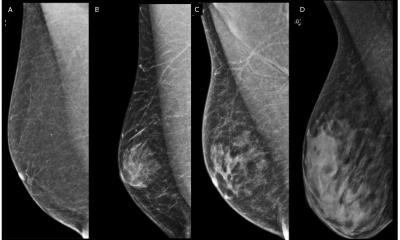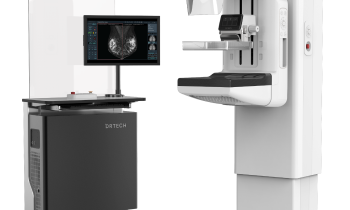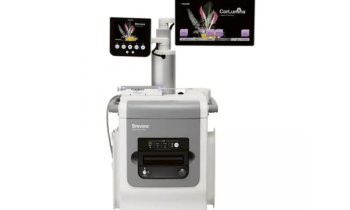How Breast Cancer Spreads And New Ways To Treat It
Research into new methods to prevent and slow metastatic breast cancer will be presented this week at the Era of Hope conference, a scientific meeting hosted by the Department of Defense Breast Cancer Research Program (BCRP).
Approximately 6 percent of women with breast cancer will have metastatic disease upon diagnosis, and up to 30 percent of node-negative and 70 percent of node-positive breast cancers will relapse. 1 Common sites for breast cancer to spread are to the lungs, liver, brain and bones.
Studies presented at Era of Hope evaluate early research on a vaccine for HER2+ breast cancer that has stopped responding to treatment is entering human clinical trials later this year will also be discussed.
"New treatments for metastatic breast cancer are needed, as many patients become resistant to existing therapies," said Captain Melissa Kaime, M.D., Director of the Congressionally Directed Medical Research Programs (CDMRP), under which the BCRP is managed. "The novel studies presented at Era of Hope explore a number of promising pathways for treatment and new targets for preventing the spread of cancer."
Dissecting Tumor Stromal Interactions in Breast Cancer Bone Metastasis
Principal Investigator: Yibin Kang, PhD, Princeton University
Between 60 and 80 percent of late-stage breast cancer patients eventually face bone metastasis. 2 Discovering bone metastasis genes that are clinically relevant and functionally important are critical for the development of novel therapeutics for breast cancer patients.
In this study, a multidisciplinary approach was applied to analyze the molecular basis of breast cancer bone metastasis, combining tools to analyze genomic information with animal models and clinical analysis of cancer metastasis. Candidate genes, including one dependent on EGFR 3 (Epidermal Growth Factor Receptor), and a TGFb (Transforming Growth Factor-beta) target gene called Jagged1 were identified. The study revealed a network of molecular crosstalk between tumor and bone cells using Jagged1 in tumor cells, EGFR in bone cells and TGFb released from damaged bone. Such pathological tumor-host tissue interactions eventually lead to tumor expansion and bone destructions. Targeting these pathways can reduce the development of bone metastasis and provide new avenues for managing the progression of the disease to the bones.
"We are excited to have identified new genetic markers for patients at high risk for bone metastasis, which may provide additional potential targets for preventing and treating the disease," said Dr. Yibin Kang of Princeton University.
Rapid Translation of a Novel and Potent Vaccine in HER2+ Metastatic Breast Cancer Patients
Principal Investigator: Kim Lyerly, MD, Duke Medical Center
Approximately 20 percent of breast cancers are HER2+, meaning they over-express the HER2 gene, resulting in a particularly aggressive form of the disease.4 The first targeted treatment approved to treat HER2+ breast cancer was Herceptin® (trastuzumab) in which the BCRP provided the early funding for research leading to the development of monoclonal antibodies against the HER2 receptor. However, despite its specificity, many patients experience resistance.5 Researchers at Duke University Medical Center evaluated a novel viral vector vaccine combination for testing in trastuzumab-refractory breast cancer patients.
Viruses attack and invade host cells by injecting their DNA as part of their replication process. In vaccine development, viruses can be used in this way to bring disease-fighting genetic information inside human cells.6 In this study, the two viral vectors, an adenovirus construct (Ad-HER2) and an alphavirus VRP construct (VRP-HER2), when used together in animal models have shown to elicit potent immune responses capable of halting the growth of and directly killing human breast cancer cells that are resistant to trastuzumab. Duke researchers, in seeking to prepare and submit an Investigational New Drug (IND) application for the U.S. Food and Drug Administration (FDA), have demonstrated through preclinical research that the vaccine is potent, does not cause tumor development, and is compatible with lapatinib, another treatment specifically targeting HER2+ breast cancer. Both viral vectors are currently undergoing preclinical toxicology studies and are expected to enter the clinic in the third quarter of 2011.
"Patients with HER2+ breast cancer often face the reality of relapse," said Dr. Kim Lyerly of Duke University Medical Center. "We are excited about continuing this translational-based, cutting-edge vaccine strategy, and potentially bringing them a new way to fight the disease."
Article Reference:
US Department of Defense Congressionally Directed Medical Research Programs
11.08.2011











